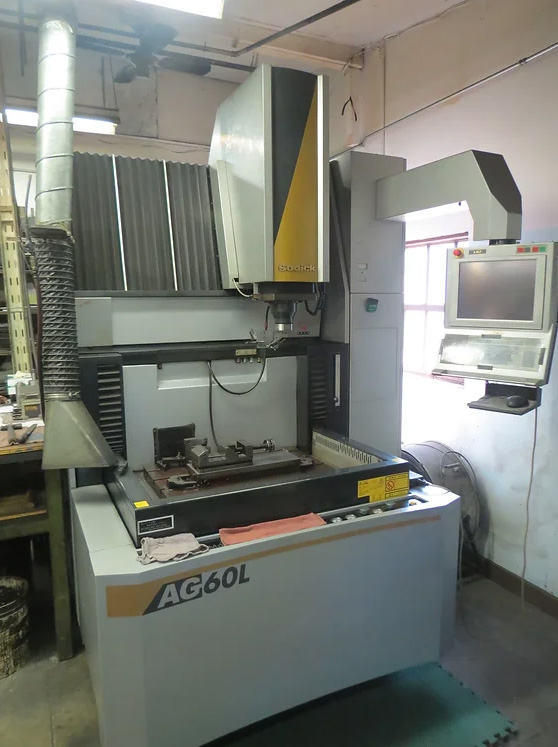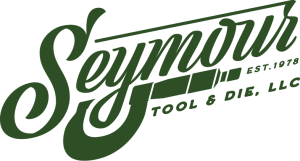Electrical Discharge Machining (EDM), also known as spark machining, spark eroding, or wire erosion, is a manufacturing process that uses electrical discharges to cut and shape conductive materials. During this process, we use a copper or graphite node to generate an electrical discharge between the node and the workpiece, creating intense heat and vaporizing small pieces of material.
EDM is commonly used to create shapes too difficult or complex for traditional machining methods. It's especially useful for machining hard materials such as titanium or carbides. It's a relatively slow process, however, which means it isn't always suitable for large-scale production.
Equipment Specifications
SODICK AG60L (sinker)
Capacity:
- X-axis: 23.62"
- Y-axis: 16.53"
- Z-axis: 14.56"
The Sodick is designed for sinker EDM operations, providing high precision and efficiency in creating complex geometries and deep cavities.
DRILL MATE 430i-A (hole popper)
Capacity:
- X-axis: 23.5"
- Y-axis: 17.25"
- Z-axis: 15.5"
The Drill Mate is optimized for drilling fine holes with high precision, ideal for applications requiring intricate hole patterns and depths. It can machine holes ranging from 0.04" to 0.187" in diameter.

EDM Applications
EDM is particularly valuable in the manufacturing industry for its ability to produce intricate and complex shapes that are challenging to achieve with traditional machining methods. This capability makes it ideal for working with hard materials such as titanium or carbides, which are commonly used in aerospace, automotive, and tool and die industries.
Unlike conventional machining, EDM does not require mechanical force in the cutting process, thus eliminating mechanical stresses on the workpiece. This aspect is particularly important when working with fragile, brittle, or thin materials. Additionally, since the electrode does not wear significantly during the process, it contributes to consistent accuracy and surface finish over longer production runs.
FREQUENTLY ASKED QUESTIONS
Electrical Discharge Machining
What materials can be machined in an electrical discharge machine (EDM)?
Why use an EDM over an engine lathe?
What are the most common applications for an EDM?
Does an EDM have any limitations?
What's the difference between a "sinker" EDM machine and a "hole popper" EDM machine?
Contact Seymour Tool & Die
Interested in our precision machining services? Contact our skilled machinists today with any questions, comments, or suggestions about your job and what we can do for you.
 11416 Wilson Road., North East PA
11416 Wilson Road., North East PA 
